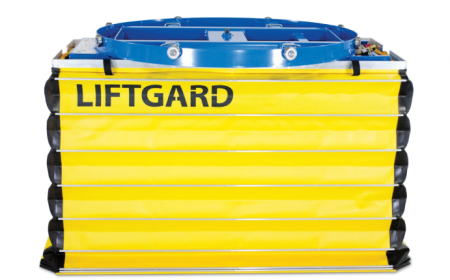Adjustable tables are becoming the norm in scores of applications, with their scissor mechanisms raising or lowering to accommodate elaborate application workflows. Unfortunately, although undoubtedly handy, this equipment form has been known to cause injuries. Dynatect lift table covers exist to negate such issues. Beginning with the LIFTGARD range, let’s see what this ENKOSI-endorsed personal protection system has to offer.
Identifying the Hazard
Tables shouldn’t be considered a threat, not if they’ve got 4 legs and a non-moving surface. Fair enough, except the goalposts that define table shapes and functions have shifted. There are scissoring frames that concertina upwards and downwards. Their level platforms tilt, perhaps when conveying a heavy package. In hospitals, the reclining surfaces turn on gimbals. They have pinch points and extrusions that could snag someone’s sleeve. In a worst-case scenario, those moving parts could trap a finger or hand. Protecting life and limb, LIFTGARD/GORFRAME lift table covers form robust barriers between moving table bases and user extremities.
Exploring the LIFTGARD Range
Ordinary stitched fabrics and shaped steel inserts work well, but they’re not the most ideal solution. Fabrics separate and metal inserts can break, after all. The LIFTGARD system opts for a stronger, more reliable personal protection feature, which sees extruded aluminium sections providing a more rigid barrier. Dyed in yellows and blacks, these lift table covers are pre-assembled before they’re shipped, so there’s little that can go wrong during their installation. Additional features in the LIFTGARD product line include rounded corners, a rigid structure, space for venting, and a stiffer build that can match the upward and downward motions of a movable table base.
Equipped with GORFRAME Protection
Elsewhere, a table is moving angularly. It’s hinged, with a platform that swings upward and back again as a processing assembly calls for a new work piece. The operator is at risk, with his attention span caught up in the moment. A finger has strayed too close to the supporting mechanism, and those moving parts include a hydraulic piston, which could pinch-trap a finger at any minute. GORFRAME protection systems prevent these kinds of accidents. The clamshell-shaped cover moves in a range of different directions, it copes well with lateral movement, and swings easily in arcing turns to cover wide angular platform shifts. Made by Dynatect, the rounded covering is strengthened by numerous reinforced ribs.
In the ENKOSI client directory, there are examples of LIFTGARD/GORFRAME lift table covers in a number of diverse applications. They’re used in the manufacturing sector, of course, but then there are instances where the protection systems are found on fairground rides, dentist chairs, imaging tables, and more.
For more information, visit our machinery protection page or contact us.


